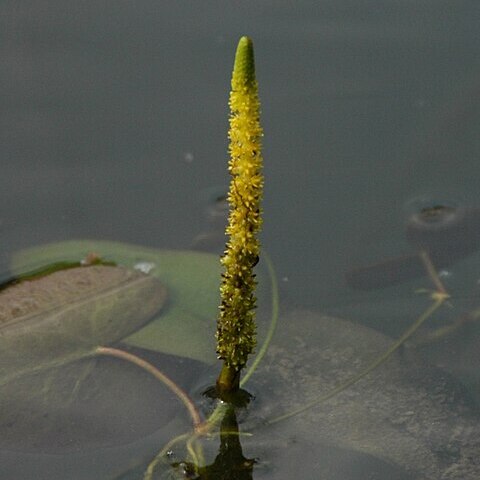Rhizome obovoid or elongated, to 2 cm, often with filament remnant of sheath. Petiole 9-15 cm in submerged leaves and 40-60 cm in floating leaves; leaf blade narrowly ovate to linear, 4-6 × 1-2 cm, herbaceous, with 7-9 primary veins at base, base cordate or rounded, margin entire, apex rounded or with a blunt tip. Inflorescence to ca. 5 cm, pedunculate. Flowers bisexual. Perianth segments 2, yellow, slightly obovate, ca. 2 mm. Stamens 6; filaments broadened toward base. Carpels slightly united near base, with 4-6 ovules per carpel. Fruit ovoid, 2-3 mm, with a short terminal beak. Fl. Apr-Oct.
A herb which grow in water. The rhizome is long and can be 2 cm across. The leaves vary in shape and size. The leaves under the water can be 25 cm long by 6 cm wide but the floating leaves are smaller.


